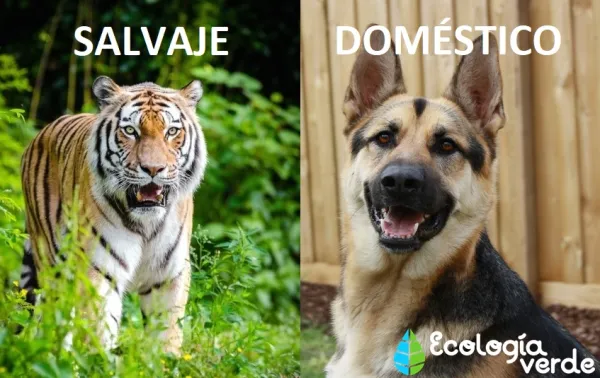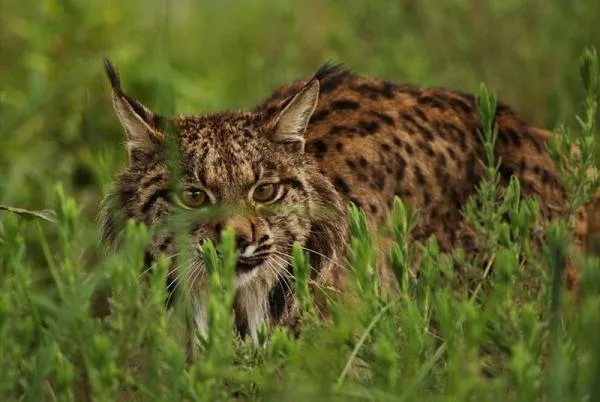Before the arrival of humans, all animals lived freely in nature. With the process of domestication, however, many animals began to change both physically and behaviorally over generations. Dogs and cats are the most well-known examples—today they live with us as domestic companions.
Understanding the similarities and differences between wild animals and domestic animals is essential not only for biology but also for education, especially when explaining these concepts to children who are learning about their environment. Below, we take a detailed look at the key characteristics of both.

Adaptability is a universal trait of life. Animals evolve to survive in the environment that surrounds them, but the way wild and domestic animals adapt is very different.
Wild Animals
Wild animals must constantly face predators, climate changes, and food scarcity. Their lives depend on sharp instincts and survival skills. For example:
They are cautious when approaching new objects or beings, as these could represent predators or threats.
Their physical appearance often provides camouflage to hunt or hide. Predators blend into their environment, while prey may display bright warning colors that signal danger or toxicity. Some non-toxic species mimic these warning colors to trick predators.
Domestic Animals
Domesticated species adapt to human-controlled environments rather than natural pressures:
They no longer need extreme caution, since humans protect them from most predators.
Humans have selectively bred them for specific traits—appearance, temperament, or productivity. For instance, dog breeds range from tiny lapdogs to large guard dogs, while farm animals are bred to provide milk, meat, eggs, or wool.
Camouflage traits have largely disappeared in favor of human preferences for coat colors, patterns, and body size.

Domestication is a long process of interaction between humans and animals.
Dogs
Dogs are believed to be the first animals domesticated by humans. Early humans likely fed wolf pups or shared food with wild individuals. Over time, less fearful wolves evolved into domestic dogs, while wild populations continued to exist.
Other Animals
Cats, horses, cattle, sheep, pigs, and poultry were also domesticated for companionship, food, or work. Cats, in particular, may have self-domesticated by settling near human villages where food (rodents) was abundant.
Changes in Traits
Appearance – Domesticated animals often show more variation in color, size, and body shape compared to their wild ancestors.
Behavior – Aggression and fear responses are reduced. Many domestic animals show “juvenile” traits (playfulness, dependency) even in adulthood.
Lifestyle – They depend on humans for food and shelter, rarely straying far from people.
| Feature | Wild Animals | Domestic Animals |
|---|---|---|
| Habitat | Forests, grasslands, oceans, deserts—natural ecosystems | Human households, farms, or urban settings |
| Adaptation | Evolve through natural selection, with strong survival skills | Adapt to human needs through selective breeding |
| Alertness | Highly cautious, avoid threats | Less cautious, trusting toward humans |
| Appearance | Camouflage or warning colors | Wide variety of colors/shapes chosen by humans |
| Food Source | Hunt or forage independently | Fed by humans, less competition |
| Relation to Humans | Keep distance; some may pose danger | Highly dependent, often kept as companions or livestock |
Human interaction has reshaped the role of many species:
Domestic Animals
Dogs: loyal companions, helpers in guarding, hunting, and therapy.
Farm animals: raised for meat, milk, eggs, wool, or labor.
Cats: protect food stores by hunting rodents, later becoming household pets.
Wild Animals
They remain crucial to ecosystems—predators control prey populations, herbivores shape vegetation, and birds disperse seeds.

Wild animals represent the raw, original form of life—independent, cautious, and finely adapted to their habitats.
Domestic animals are the result of centuries of human influence, shaped for companionship, work, or food.
The differences between them are not just biological but also cultural and historical. Recognizing these contrasts helps us respect the natural world, teach children about the environment, and remind ourselves that domestication comes with responsibility.
animal tags: domestic
We created this article in conjunction with AI technology, then made sure it was fact-checked and edited by a Animals Top editor.